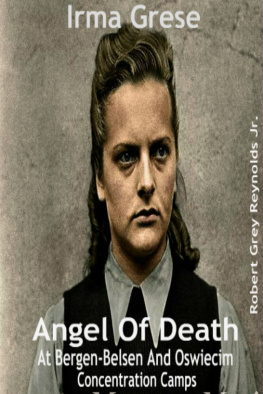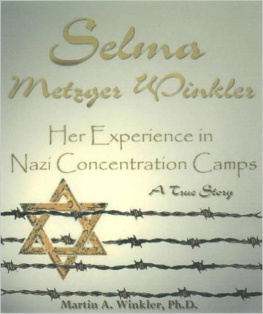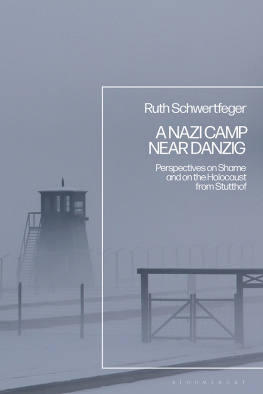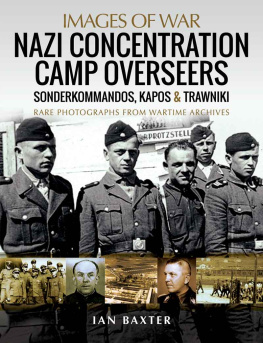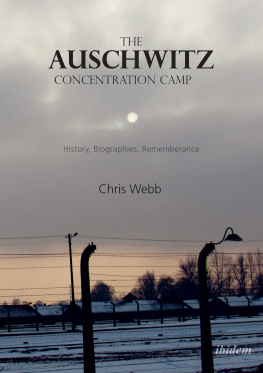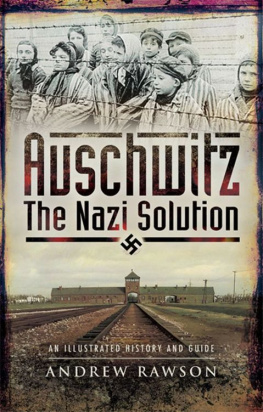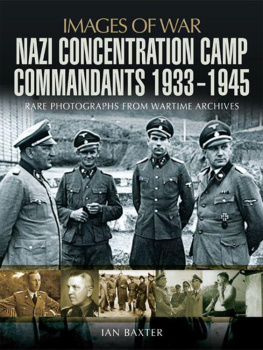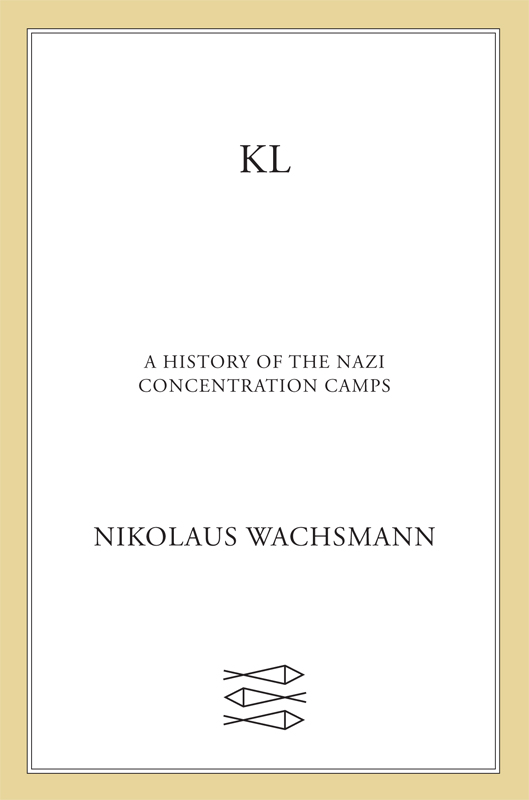Contents
Guide
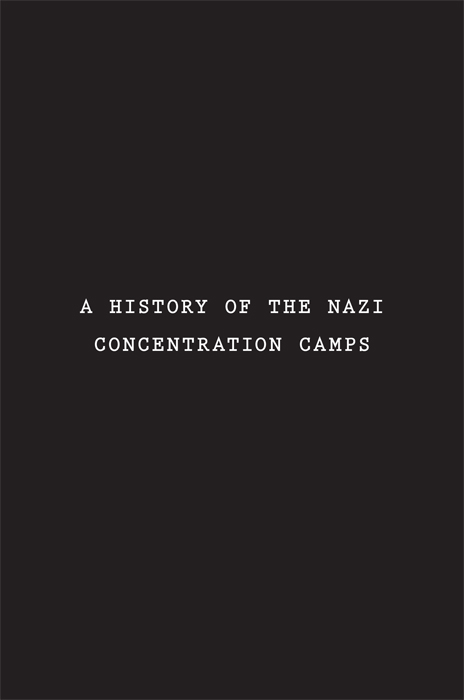

The author and publisher have provided this e-book to you for your personal use only. You may not make this e-book publicly available in any way. Copyright infringement is against the law. If you believe the copy of this e-book you are reading infringes on the authors copyright, please notify the publisher at: us.macmillanusa.com/piracy.
may the world at least behold a drop, a fraction of this tragic world in which we lived
Letter by Salmen Gradowski, September 6, 1944 (discovered after liberation, in a flask buried on the grounds of the Auschwitz-Birkenau crematorium)
Sources: von Gtz, Terror in Berlin (map 1); OdT , vol. 3 (map 6); Dugoborski, Piper (eds.), Auschwitz , vols. 1 & 5 (map 5 and 7).
Note on place-names: Both maps and text mostly use the official names of camps and cities at the time events described in this book took place, though occasionally the name in use today, or more familiar to readers, has been used instead (or is given as an alternative).
Dachau, April 29, 1945 . It is early afternoon when U.S. troops, part of the Allied force sweeping across Germany to crush the last remains of the Third Reich, approach an abandoned train on a rail siding at the grounds of a sprawling SS complex near Munich. As the soldiers come closer, they make a dreadful discovery: the boxcars are filled with the corpses of well over two thousand men and women, and also some children. Gaunt, contorted limbs are entangled amid a mess of straw and rags, covered in filth, blood, and excrement. Several ashen-faced GIs turn away to cry or vomit. It made us sick at our stomach and so mad we could do nothing but clinch our fists, an officer wrote the next day. As the shaken soldiers move deeper into the SS complex and reach the prisoner compound, later that afternoon, they come upon thirty-two thousand survivors from many ethnic, religious, and political backgrounds, representing about thirty European nations. Some seem more dead than alive as they stumble toward their liberators. Many more lie in overcrowded barracks, infested with dirt and disease. Wherever the soldiers turn, they see dead bodies, sprawled between barracks, dumped in ditches, stacked like logs by the camps crematorium. As for those behind the carnage, almost all career SS men are long gone, with only a ragtag gang of perhaps two hundred guards left behind.
Dachau, August 31, 1939 . The prisoners rise before dawn, as they do every morning. None of them know that war will break out the next day, and they follow their usual schedule. After the frantic rushjostling in the washrooms, devouring some bread, cleaning the barracksthey march in strict military formation to the roll call square. Nearly four thousand men with cropped or shaven heads stand to attention in striped uniforms, dreading another day of forced labor. Except for a group of Czechs, virtually all the prisoners are German or Austrian, though their common language is often all they share; colored triangles on their uniforms identify them as political prisoners, asocials, criminals, homosexuals, Jehovahs Witnesses, or Jews. Behind the rows of prisoners stand rows of one-story prisoner barracks. Each of the thirty-four purpose-built huts is around 110 yards long; the floors inside are gleaming and the bunks are meticulously made up. Escape is almost impossible: the rectangular prisoner compound, measuring 637 by 304 yards, is surrounded by a moat and concrete wall, watchtowers and machine guns, and barbed and electric wire. Beyond lies a huge SS zone with over 220 buildings, including storerooms, workshops, living quarters, and even a swimming pool. Stationed here are some three thousand men from the Camp SS, a volunteer unit with its own ethos, which puts prisoners through well-rehearsed routines of abuse and violence. Deaths are few and far between, however, with no more than four fatalities in August 1939; as yet, there was no urgent need for the SS to build its own crematorium. This was Camp SS terror at its most controlleda far cry from the lethal chaos of the final days in spring 1945, and also from Dachaus ramshackle beginnings back in spring 1933.
Dachau, March 22, 1933 . The first day inside the camp is drawing to a close. It is a cold evening, less than two months after the appointment of Adolf Hitler as chancellor set Germany on the road to the Nazi dictatorship. The new prisoners (still in their own clothes) are having bread, sausage, and tea inside the former office of a dilapidated munitions plant. This building had been hastily converted in recent days into an improvised camp, cordoned off from the rest of the deserted factory ground with its crumbling structures, broken concrete foundations, and derelict roads. In all, there are no more than 100 or 120 political prisoners, largely local Communists from Munich. After these men had arrived on open trucks a little earlier, the guardssome fifty-four men strongannounced that the captives would be held in protective custody, a term unfamiliar to many Germans. Whatever it was, it seemed bearable: the guards were not Nazi paramilitaries but amiable policemen, who chatted with the prisoners, handed out cigarettes, and even slept in the same building. The next day, the prisoner Erwin Kahn wrote a long letter to his wife to say that all was well in Dachau. The food was good, as was the treatment, though he was getting restless waiting for his release. I am just curious how long this whole business will last. A few weeks later, Kahn was dead, shot by SS men after they took over the prisoner compound. He was among the first of almost forty thousand Dachau prisoners to perish between spring 1933 and spring 1945.
* * *
Three days in Dachau, three different worlds. In a span of only twelve years, the camp changed time and again. Inmates, guards, conditionsalmost everything seemed to alter. Even the site itself was transformed; after the old factory buildings were demolished and replaced by purpose-built barracks in the late 1930s, a veteran prisoner from spring 1933 would not have recognized the camp.
Dachau was the first of many SS concentration camps. Established inside Germany in the early years of Hitlers rule, these camps soon spread, during the Nazi conquest of Europe from the late 1930s, to Austria, Poland, France, Czechoslovakia, the Netherlands, Belgium, Lithuania, Estonia, Latvia, and even the small British Channel Island of Alderney. In all, the SS set up twenty-seven main camps and over 1,100 attached satellite camps over the course of the Third Reich, though numbers fluctuated greatly, as old camps closed down and new ones opened; only Dachau lasted for the entire Nazi period.
The concentration camps embodied the spirit of Nazism like no other institution in the Third Reich. Guided by SS chief Heinrich Himmler, Hitlers main henchman, the KL came to reflect the burning obsessions of the Nazi leadership, such as the creation of a uniform national community through the removal of political, social, and racial outsiders; the sacrifice of the individual on the altar of racial hygiene and murderous science; the harnessing of forced labor for the glory of the fatherland; the mastery over Europe, enslaving foreign nations, and colonizing living space; the deliverance of Germany from its worst enemies through mass extermination; and finally, the determination to go down in flames rather than surrender. Over time, all these obsessions shaped the KL system, and led to mass detention, deprivation, and death inside.


